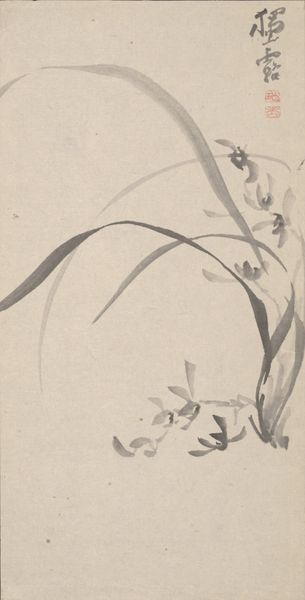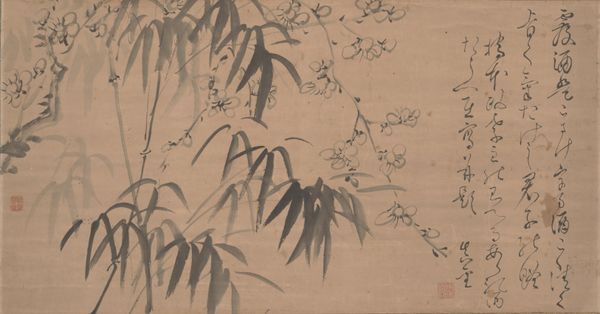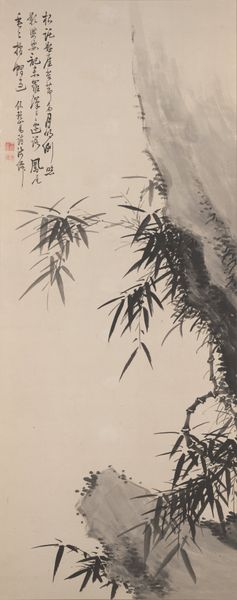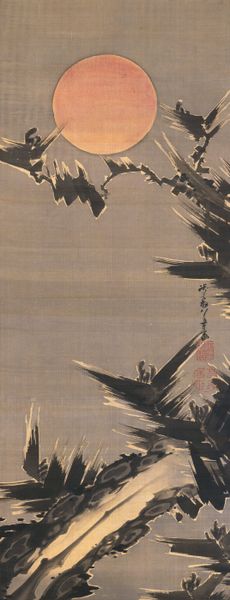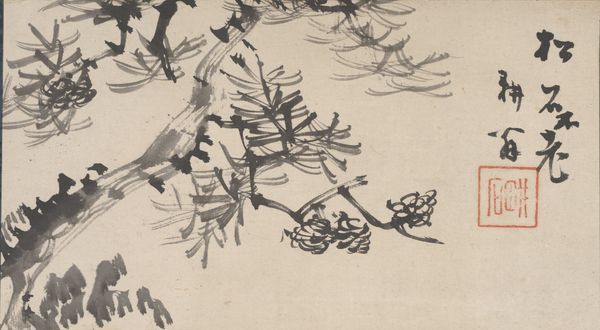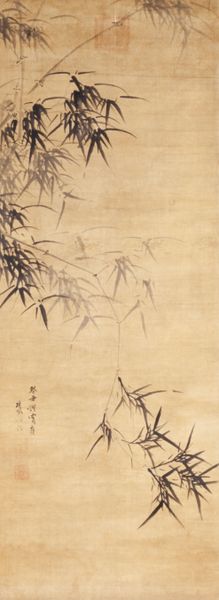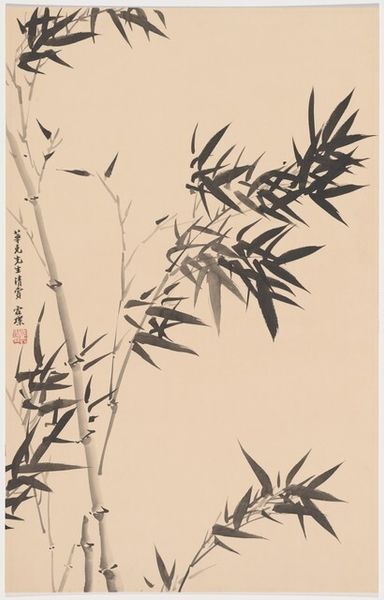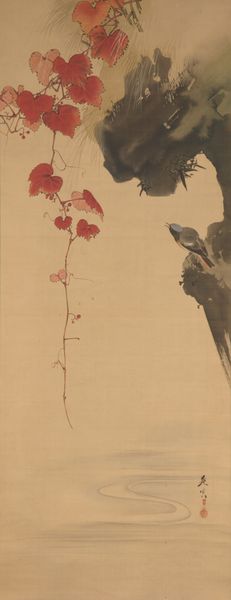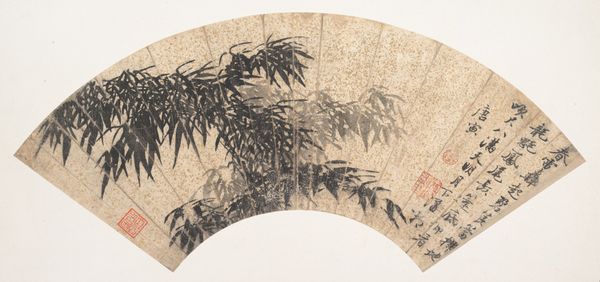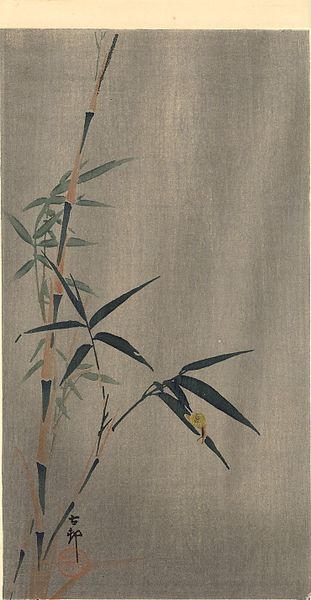
drawing, paper, ink
#
drawing
#
ink painting
#
asian-art
#
landscape
#
paper
#
form
#
ink
#
line
Dimensions: 46 1/4 × 11 1/4 in. (117.48 × 28.58 cm) (image)74 3/8 × 16 9/16 in. (188.91 × 42.07 cm) (mount)
Copyright: Public Domain
Curator: Here we have "Bamboo," a late 18th-century ink drawing by Kuwayama Gyokushū, held in the Minneapolis Institute of Art. Editor: It's so understated. My immediate impression is of quiet resilience, like nature calmly observing turbulent times. Curator: Exactly! Consider the materials—ink and paper. These weren't luxury goods; they were relatively accessible tools. Artists like Gyokushū would have trained extensively to achieve such expressive lines with simple materials. How the work was produced tells us much about craft and economy at the time. Editor: And, traditionally, bamboo represents qualities like uprightness and perseverance. Looking at the ink, I am wondering how that links back to resilience; Bamboo bends, it doesn't break. Also, the contrast of light and dark seems intentional—is it hinting at specific social inequalities of that period? Curator: It’s fascinating to view the historical and cultural landscape. During this period, the Tokugawa Shogunate was in decline, impacting artisans. Does this drawing represent that struggle and what does that do to Gyokushū’s identity in relation to it? Editor: Precisely. This era saw rising social unrest and shifting class dynamics. Viewing it today prompts us to ask—does the art serve the elite, or the common person? Does it become a reflection of national character, cultural protest, or a quiet acceptance of circumstance? The bamboo serves as both document and dream. Curator: The execution—the thin and broad brushstrokes; the deliberate blurring to create depth—it is an entire production and an important commentary. I really want to ask what type of paper was employed and its availability? Editor: When looking through that materialist approach, understanding both the accessibility and the intended audiences can further enlighten this piece beyond a quiet landscape study to reflect something about class and resistance. Curator: Examining “Bamboo” invites one to go beyond nature observation. What are your views? Editor: Definitely. This drawing isn't just about appreciating natural beauty, but also about recognizing the social commentary and production limitations and their combined message through cultural memory.
Comments
No comments
Be the first to comment and join the conversation on the ultimate creative platform.
